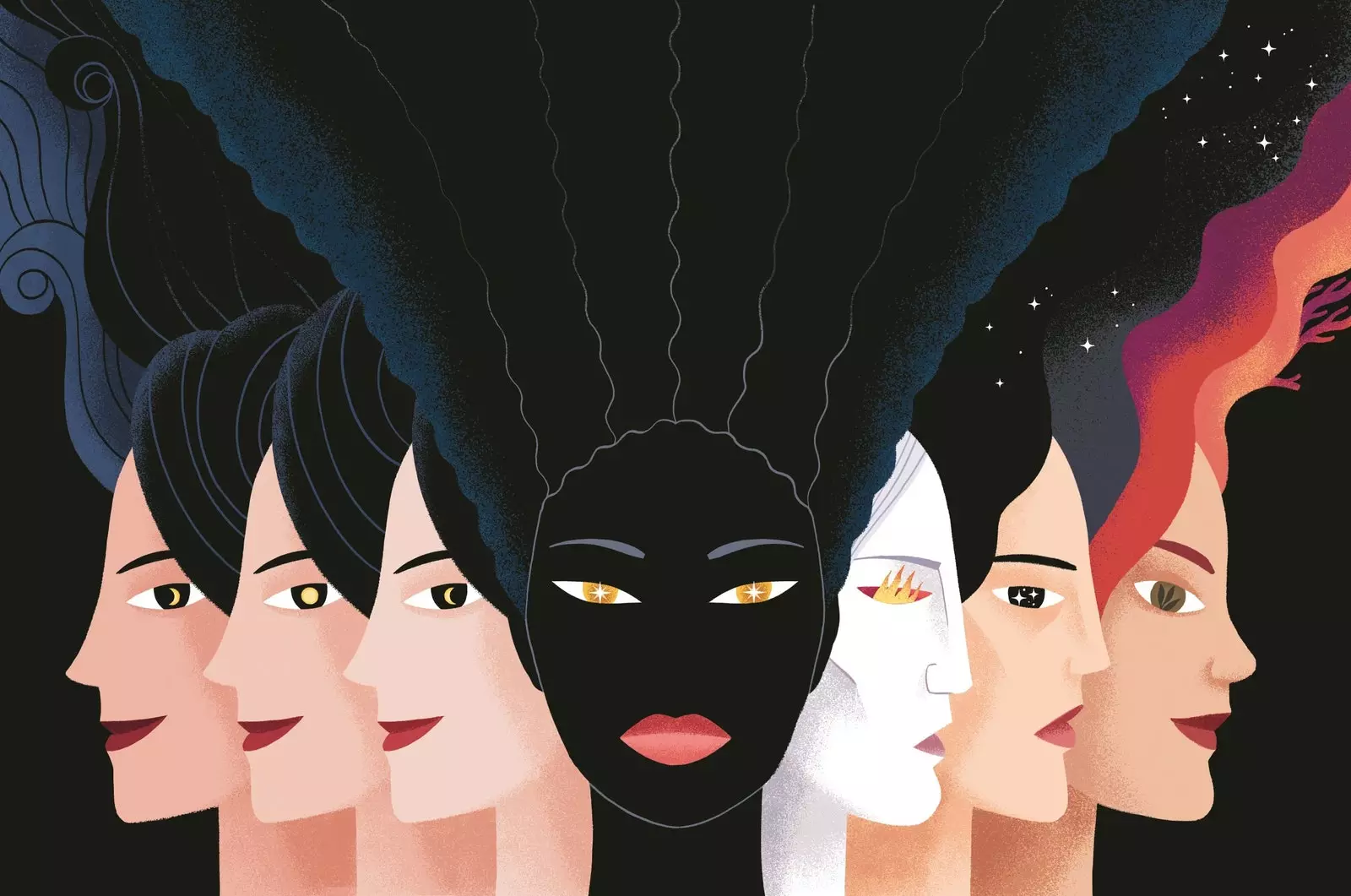
Enter the mansion with seven maids who have many secrets to tell.
It is difficult to recognize ourselves in the feminine stereotypes with which we have grown up. Sometimes, we have them so ingrained that we don't even realize to what extent we comply with them without question. Fortunately, we have been here for a long time claiming the change of roles with a very loud voice. Carmen and Laura Pacheco have brought together the main archetypes in a story that, more than a reading, is a work of art. Our Forgotten Names has become its loudspeaker and, for its readers, a reflection tool translated into literature.
The Pachecho sisters have done it again. Laura for illustration and Carmen for writing is an indispensable duo in any art lover. They have already demonstrated this on countless occasions, with works such as Divas de diván, but this time, the result has gone one step further. The story of these seven women is the story of many of us And maybe that's why Our Forgotten Names comes to life as you find yourself discovering its characters and, to a certain extent, discovering you.
Symbols and metaphors are recurrent throughout the reading , but its form is that of an illustrated story in such a way that sometimes it will seem like you are reading a book about magic, which is not far from reality either. The entertaining interpretation was precisely the goal of the authors: "That you can make a superficial reading and it seems nice, but that it leads you to reflection if you want to go deeper" Carmen told Traveler.es
But do not rush into thinking that it is just a story. Our Forgotten Names brings together mythology, feminism, history, and many years of corseted archetypes in which we have been forced to reflect or, given the refusal, face the frustration of not being in any of them. Open the door of your mansion, because these seven maids have a story to tell.
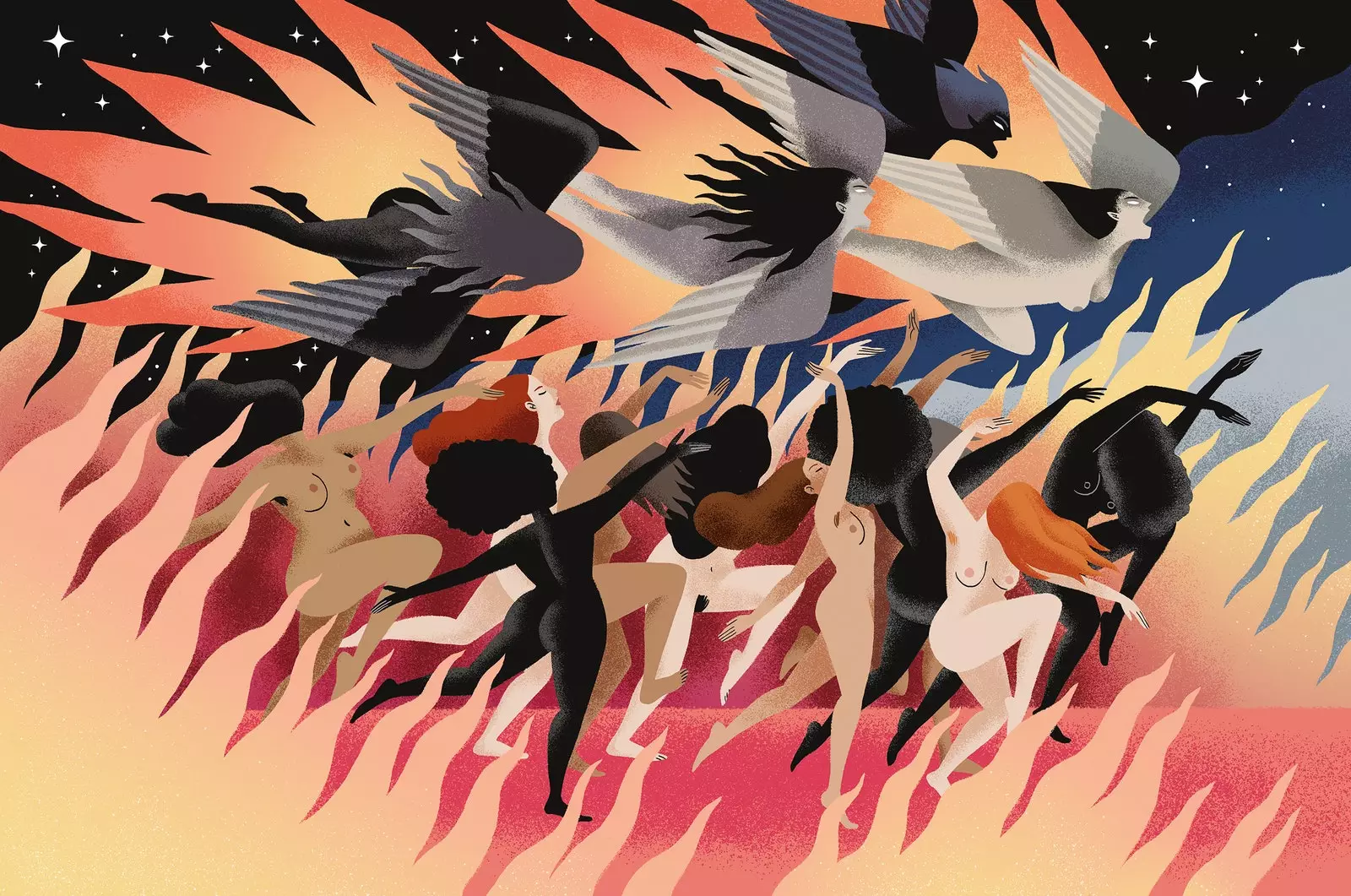
A story for adults to reflect on female stereotypes.
ONCE UPON A TIME...
These seven protagonists are servants of a mansion where every night they tell legends by candlelight. But soon, these stories will become an autobiography that will reveal their true identities . Although at first you find yourself surprised by their introductions, these personalities will begin to look familiar to you and you will soon understand that they have been in our imagination for a long time.
Laura's illustrations allow you to put a face to some characters that Carmen presents as the lover, the warrior, the mother, the sorceress and the triad . Despite their transformation over the years and their different incarnations, these seven goddesses have eternally repeated themselves in history. “There were some that overlapped because they embodied different aspects or had evolved over time, but the groups were quite clear ”, clarifies Carmen.
Speaking of female archetypes , have usually always been related to Greek goddesses: Artemis, Athena, Hestia, Hera, Demeter, Persephone and Aphrodite. However, their identities and names have been interpreted differently in numerous religions and parts of the world. That is why, as Laura says, “It was interesting that each character represented several goddesses and not one in particular”.
In this way, through the drawings that accompany the text, we see a clearly differentiated aspect between them, but their features gather numerous references. Laura explains that "The warrior is very much based on Athena, but she also has some elements of the Hindu goddess Kali, and the lover would correspond to Venus, but she shares some symbols of the African goddess Oshun".
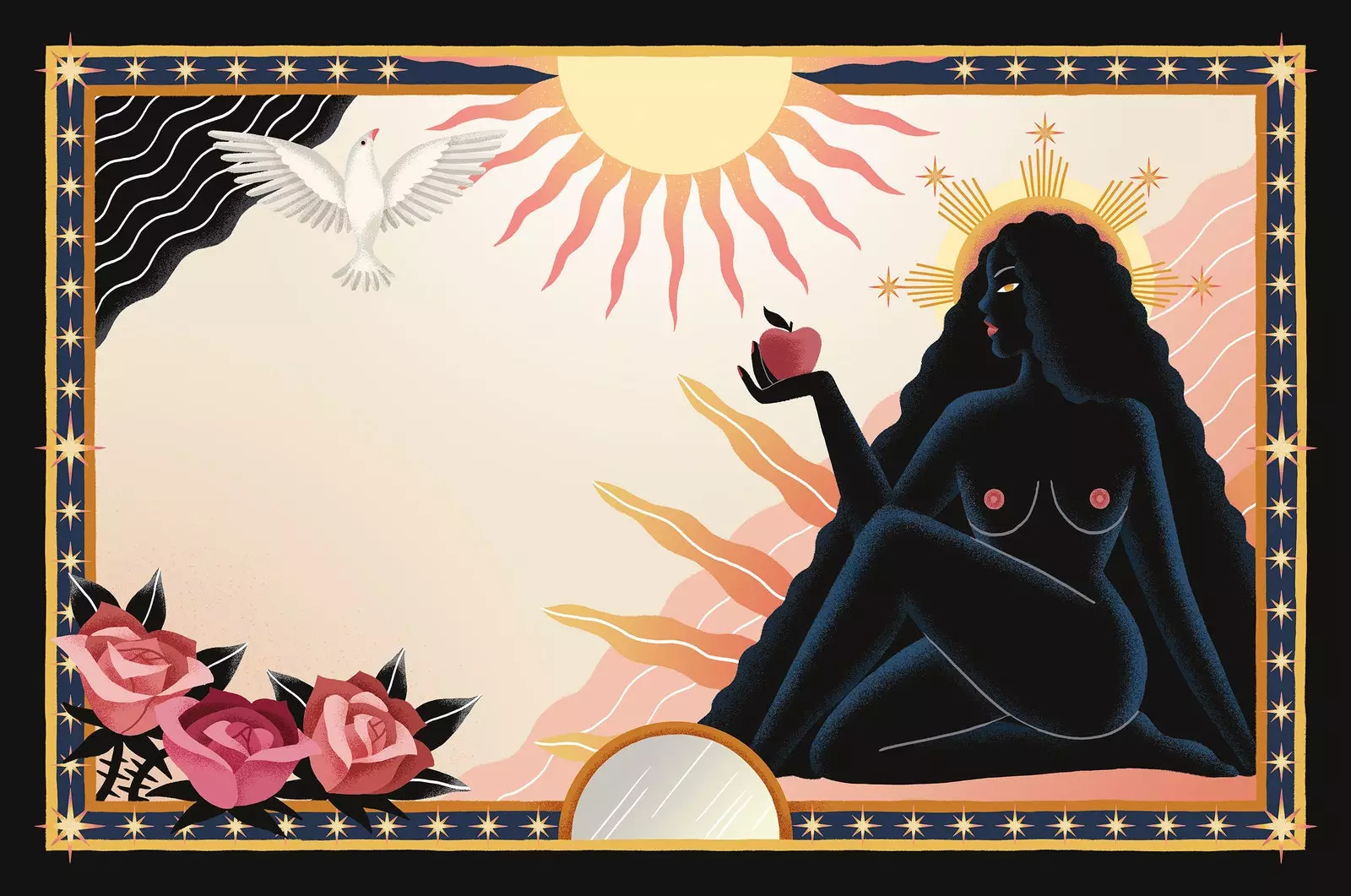
The lover, one of the most used archetypes in popular culture.
In her presentations, her words shed light on those stereotypes that have always lived unconsciously in our heads. Phrases as shocking as the warrior's manage to shake your subconscious and, without a doubt, your emotions too: “And pain doesn't stop me in battle. Can't stop me, because pain is the secret language of women ”. And others, like that of the sorceress, create an absolutely inspiring torrent of inner strength: “ I am lonely, powerful, wise and free. The one who does not fear the rejection of men nor shuns old age . And that's why they say I'm cursed."
OUR GODDESSES
The characters in this story go back to ancient times, but the fact that they are so present is due to the fact that have continued to be assiduously represented in today's popular culture . Series, movies, books and even songs in which women had a role as hackneyed as it was boring. To recognize these topics, Carmen believes that “ a character is well built and doesn't fall into the cliché when you can change the gender and it still works . This is not very common with female characters.”
Perhaps the lover has been one of the most punished archetypes in culture . She has always been portrayed as having immense attractiveness, she has been prey to objectification and has embodied female sexuality in a flat and frivolous way, thus becoming the famous femme fatale. These characters often use their weapons of seduction to dominate men, positioning herself again, never better said, as "the bad guy in the movie".
With the warrior, however, that veneration by the public has really always been a patriarchy in disguise , as her respect has normally been generated by being as strong as a man. They are recognized for being serious and cold, and they are also not allowed to waver at any time. The sorceress has also been one of the most repeated and hit. The fact of embodying an independent and intelligent woman , who has not followed the canons imposed by the rest of society, has usually earned her the role of the villain.
And finally, the triad and the mother. The first three, condemned to play a role depending on their age and their usefulness in society: daughter, mother or grandmother; or girl, maiden or wife . As Laura clarifies, "until very recently it has always been like this, especially in stories where the female characters are few and secondary and have a very clear role: they are usually the protagonist's mother or girlfriend." The mother, on the other hand, will always be the main archetype, related on numerous occasions to the Virgin. and represented in countless ways throughout history.
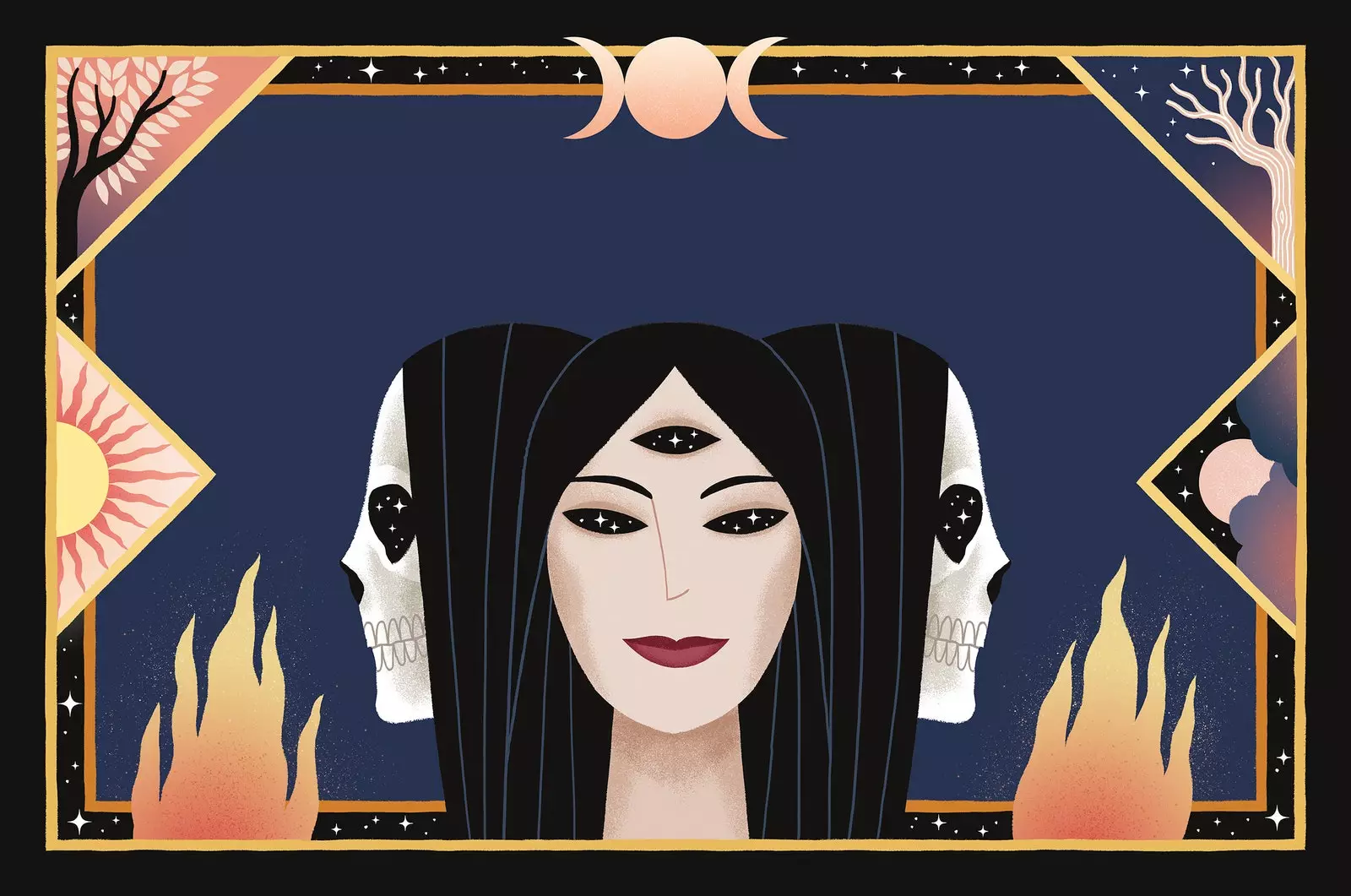
The triad, the triple archetype that condemns women for their age and social utility.
After looking at the treatment these stereotypes have consistently garnered, it is important to pay attention to the final moral of Our Forgotten Names . Some wise words that will always resonate in the minds of those who read it, coming from archetypes that, in this case, live in the body of seven women who carry years of prejudice on their backs.
"Fortunately, many years ago I realized that I did not have to respond to any stereotype and, in fact, if I have wanted to write this story, it is because I would like everyone to do the same reflection”, says Carmen. In this way, Our Forgotten Names takes us on an inner journey, a revision of the canons to which we are supposed to have always had to respond and of which we have already grown tired.
Just as the power of the seven maids lies in their union, our own magic begins with the freedom of not having to take on any role , of not having to follow any path marked out by others.
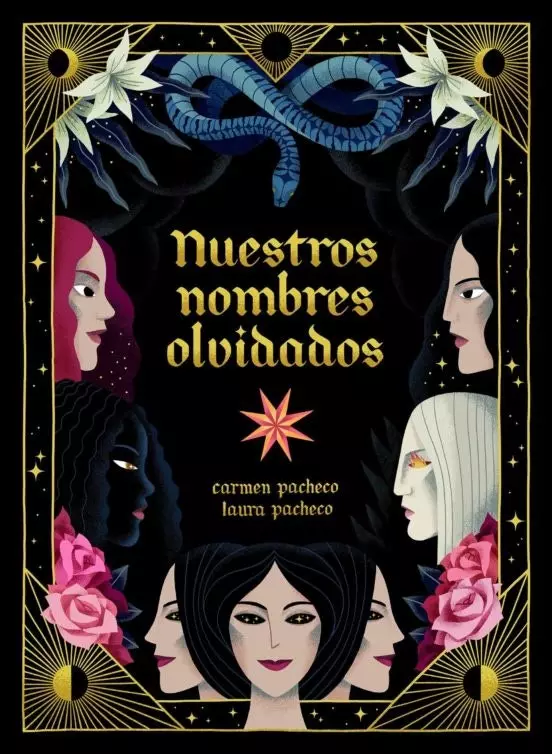
Planet
our forgotten names
our forgotten names
